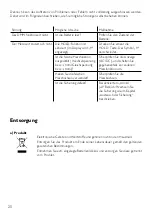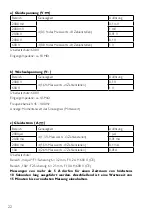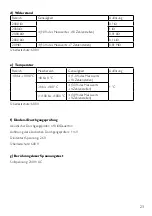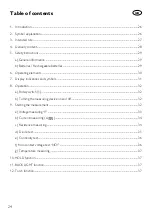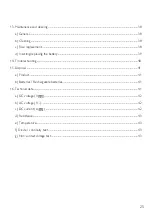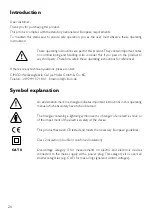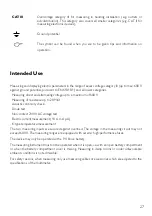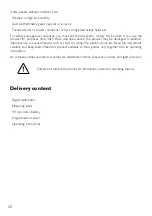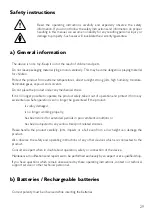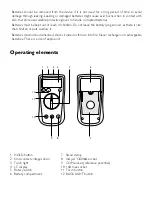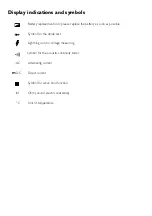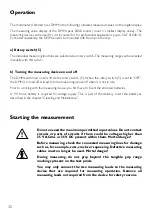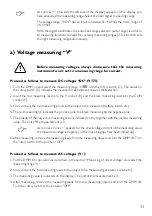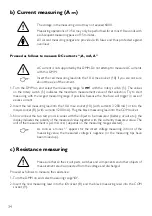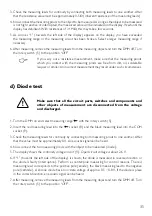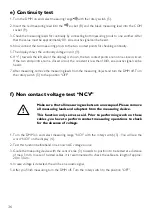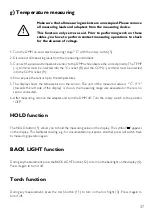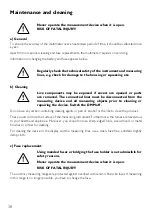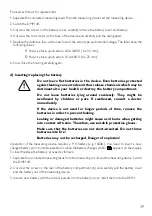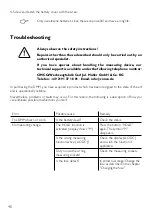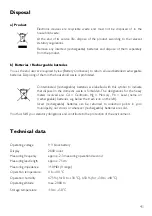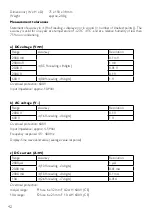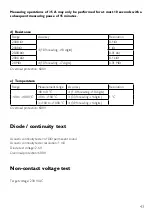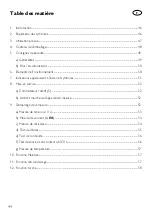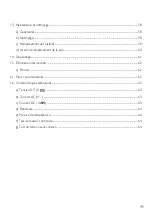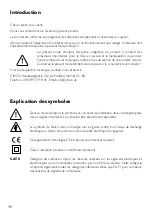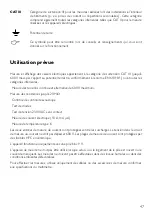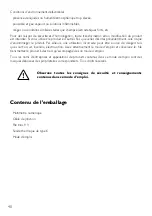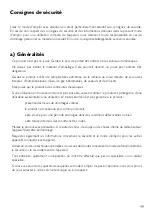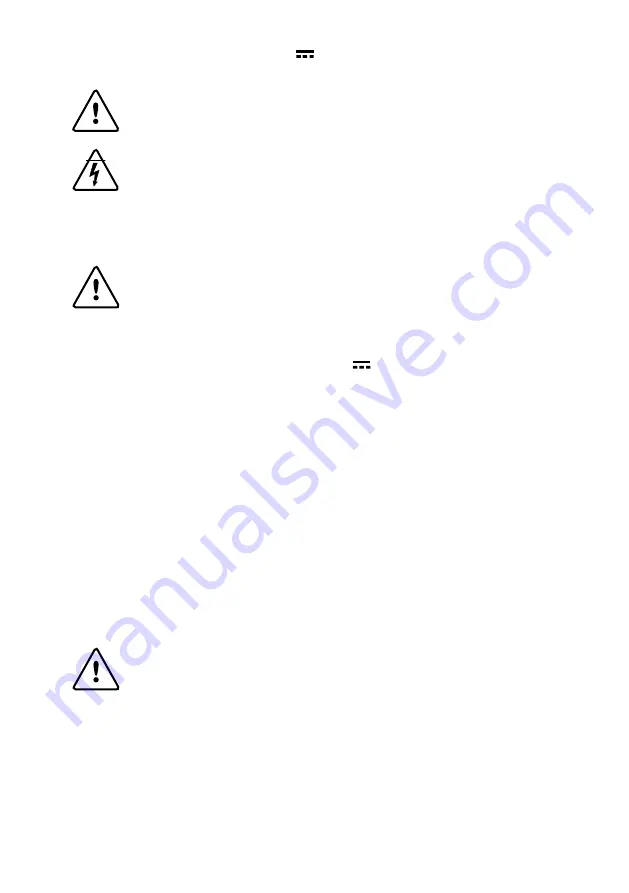
34
b) Current measuring (a )
The voltage in the measuring circuit may not exceed 600 V.
Measuring operations of >5 A may only be performed for at most 10 seconds with
a subsequent measuring pause of 15 minutes.
All current measuring ranges are provided with fuses and thus protected against
overload.
Proceed as follows to measure DC currents “µa, ma, a”
AC current is not supported by this DMM. Do not attempt to measure AC currents
with this DMM.
Insert the red measuring lead into the 10 A max socket (10) if you are not sure
about the size of the current.
1. Turn the DMM on and select the measuring range “A
” with the rotary switch (5). The values
on the rotary switch (5) indicates the maximum measurement value of that selection. Try to start
measuring with the largest measuring range if possible, because the fine fuse will trigger in case of
excess current.
2. Insert the red measuring lead into the 10 A max socket (10) (with currents > 200 mA) or into the
mAµA socket (8) (with currents <200 mA). Plug the black measuring lead into the COM socket.
3. Now connect the two test prods in series with the object to be measured (battery, circuit etc.); the
display indicates the polarity of the measured value together with the currently measured value. The
unit of the measurement is µA, mA or A (depends on the measuring range selected).
As soon as a minus “-” appears for the direct voltage measuring in front of the
measuring value, the measured voltage is negative (or the measuring tips have
been mixed up).
c) resistance measuring
Make sure that all the circuit parts, switches and components and other objects of
measurement are disconnected from the voltage and discharged.
Proceed as follows to measure the resistance:
1. Turn the DMM on and select measuring range “
Ω
”.
2. Insert the red measuring lead into the
Ω
socket (8) and the black measuring lead into the COM
socket (9).
Summary of Contents for 11 1406
Page 87: ...87...

